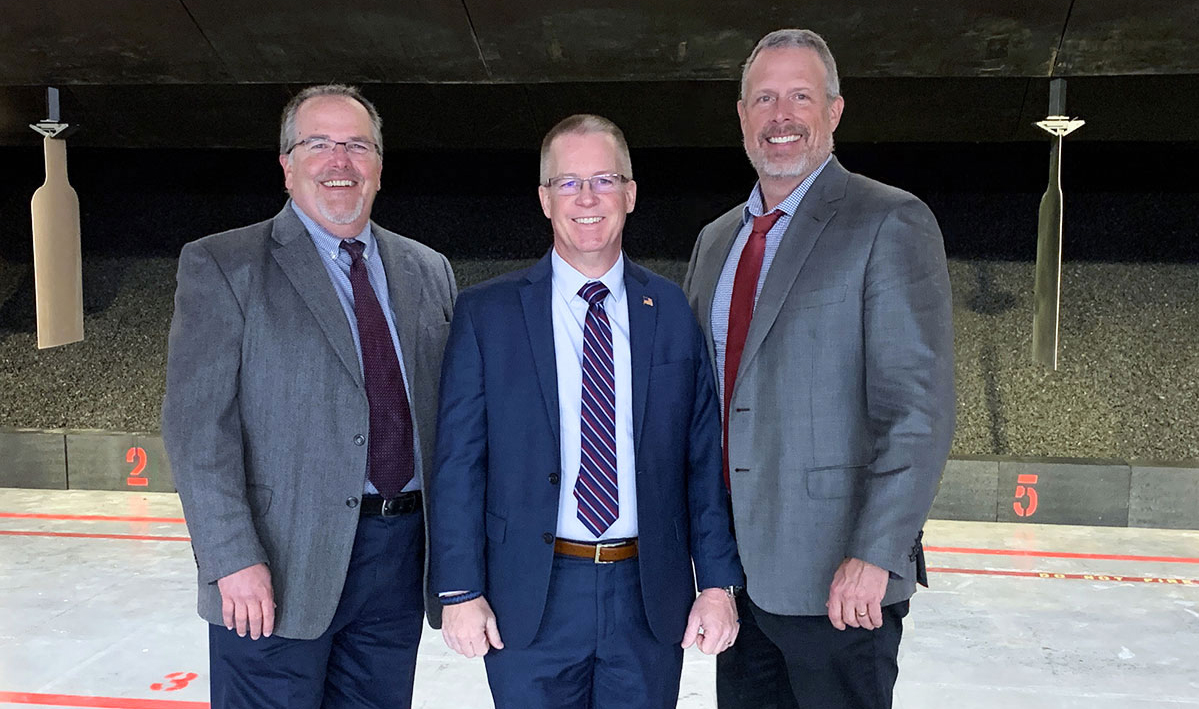Q&A: How Public Safety Design Has Changed Since Getting Our Start with One-of-a-Kind Facility
 In the following, Danny Walker, Bobby Cummings, and Mike Stilwell discuss our history, how public safety design has changed, and what’s most important in training facilities for the future:
In the following, Danny Walker, Bobby Cummings, and Mike Stilwell discuss our history, how public safety design has changed, and what’s most important in training facilities for the future:
Our history: One day in 1988, Clark Nexsen project manager Tom Winborne took a call about a classified U.S. Navy project that would become the firm’s first training facility and the foundation for our Public Safety practice. Now declassified, that project is known as the ‘MST’ at Naval Station Oceana, Dam Neck Annex. The Multi-Story Trainer is a multiple story live fire training facility used by the U.S. Navy’s most elite special forces operators. It is still regarded as one of the most capable and adaptable live fire training environments in the world.
What made us a good fit for that first live fire training project for the Navy?
Danny Walker: We — Tom Winborne’s team specifically — had completed a number of classified projects at Dam Neck. In a nutshell, we were a trusted partner.
Bobby Cummings: We also worked really well together, both the internal team and with the client. The project manager knew what he would get when working with us. Shortly after that, we designed another training facility on a different base that was geared toward maritime training. Things took off from there.
What has changed most in public safety design since we began working on these types of facilities?
Bobby Cummings: Technology has been the biggest driver of change in the sense that it has created opportunities to train differently and more effectively. Traditionally, firearms training facilities have been very linear — stand at one end, fire to the other. Now they are multidimensional and becoming more so. In today’s ranges you can shoot in a 180 degree arc and practice more scenarios.
I talk in our seminar about the ‘training triangle,’ which looks at three main components in public safety training. There’s the classroom, where we discuss theories, concepts, and ideas; the firing range; and simulation, where we practice immersive scenarios for better decision making. The most important thing public safety design does is create facilities that hone skills and support officers in making the best possible decision during any conflict. All three legs of the triangle play a role in that.
I also see a shift occurring from training focused on physical tools to soft tools — the human psyche, how officers interact with people, etc. People today have genuine concerns about policing, and we need to incorporate addressing those concerns into the training facilities we design. More training in mental health and more training in how officers can use nonverbal cues like body language to de-escalate situations will be important. I see immersive simulation environments as the key to making that training effective.
Where do you see the industry going in the future?
Bobby Cummings: More emphasis on training using virtual reality and simulation. When it comes to current concerns with policing, technology will play a major role in addressing those through training. I think the shift to classroom, simulator, and decision-based training will become even more significant. I would expect that live fire training will also become part of the immersive simulation environment. I think we’ll also see things like defensive tactics rooms — creating a dedicated space to practice these tactics.

The 300 degree Use-of-Force Simulator at the Haynes / Lacewell Police and Fire Training Facility allows officers to respond to critical scenarios. These sessions provide valuable training and analysis of situations that can take place in a matter of seconds.
Danny Walker: One of the challenges for public safety agencies is getting funding for these types of facilities. On some level it’s about finding ways to divert funding to training, and the right type of training. We are also seeing a growing number of combined training facilities for fire departments and law enforcement. On the surface, this benefits the municipality in terms of efficiency and cost, but in practice the benefits are actually even greater. Firefighters and police are often responding together, and training in the same spaces makes for a more cohesive team.
Mike Stilwell: On the commercial side, there has been a surge in gun ownership across the country — particularly first-time gun owners. Commercial firing ranges are seeing enormous demand for training and practice (which is good! People are being safe). I expect we’ll see a combination of more new ranges built, and also that we’ll see more outdoor firing ranges converting to indoor ranges, especially in more populated areas where encroachment could become a concern.
Bobby Cummings, PE, DBIA, leads our Public Safety practice, partnering with federal, state, and local municipalities to develop modern training facilities for their law enforcement officers. For more information or to speak with Bobby about public safety design, please call 540.982.0800 or email bcummings@clarknexsen.com.
Mike Stilwell is our Vice President for Public Safety and Shooting Sports Facilities Services. He joined Clark Nexsen in 2018, bringing more than two decades of experience working with law enforcement agencies, elite forces including the FBI and Secret Service, the military, and private organizations. To connect with Mike, please call 540.982.0800 or email Michael.stilwell@clarknexsen.com.
Danny Walker, AIA, DBIA, has an extensive background in federal and public safety design. He served as a member of the Portsmouth (VA) Auxiliary Police Unit for nearly 30 years and brings the insight from that personal experience to each project we design. To speak with Danny, please call 757.455.5800 or email dwalker@clarknexsen.com.